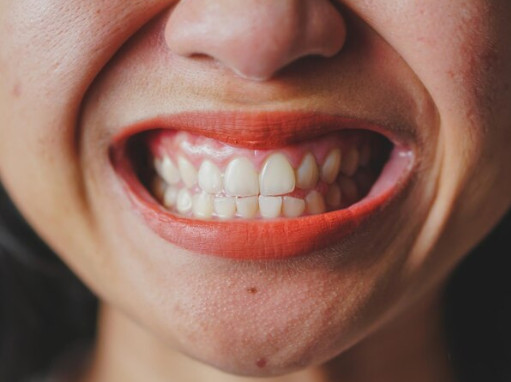What Causes Crooked Teeth?
- Genetics and Hereditary Factors: Crooked teeth can often be attributed to genetic factors, where the size and shape of the jaw and teeth are inherited traits passed down through generations. These hereditary influences play a significant role in the development of dental misalignments.
- Poor Dental Care and Habits in Childhood: The lack of proper dental care during childhood, such as premature loss of baby teeth, thumb sucking, and prolonged bottle use, can contribute to dental misalignment issues. These early habits and practices can impact the alignment of teeth as they grow.
- Trauma or Injury: Dental misalignments may also result from trauma or injury to the jaw. Accidents that affect the jaw structure can disrupt the natural alignment of teeth, leading to crooked or misaligned teeth.
Why Should You Correct Crooked Teeth?
- Health Considerations: Misaligned teeth can harbor food particles and bacteria, increasing the risk of gum disease and making oral hygiene challenging.
- Aesthetic and Confidence Issues: A straight smile can significantly boost self-esteem and confidence.
- Functional Problems: Crooked teeth can affect chewing and speech, leading to further health issues down the line.
Treatment Options
- Traditional Braces: A time-tested method for correcting misalignment, using metal brackets and wires to gradually move teeth into place.
- Invisalign and Other Aligner Therapies: Clear, removable aligners offer a less noticeable and more comfortable alternative to braces.
- Veneers and Cosmetic Dentistry: For minor corrections, veneers can improve the appearance of teeth without altering their position significantly.
- Surgical Options: In severe cases, orthognathic surgery may be necessary to correct jaw misalignments.
Choosing the Right Treatment
Selecting the right treatment for misalignment requires weighing factors like severity, cost, duration, and personal preferences. It’s vital to consult an orthodontist to craft a decision aligned with your specific needs.
By understanding the severity of the misalignment, you can choose a treatment that fits your budget, aligns with your preferences, and ensures a successful outcome. Orthodontists provide expertise in guiding patients through treatment options, helping individuals make informed decisions that lead to effective results.
Taking the time to explore these considerations will not only improve your smile but also enhance your overall oral health for the long term.
FAQs
Q: How long does the treatment for crooked teeth usually take?
A: The duration of treatment can vary widely depending on the severity of the misalignment and the method chosen. Traditional braces might be worn for 18 months to 3 years, whereas treatment with Invisalign can be shorter, often between 6 to 18 months.
Q: Is the process of correcting crooked teeth painful?
A: While discomfort is common, especially following adjustments to traditional braces or transitioning to a new aligner set, it is typically manageable with over-the-counter pain relief or adjustments to dental care routines.
Q: Can crooked teeth revert to their original position after treatment?
A: Yes, there is a possibility of teeth shifting back after treatment. This is why retainers are often required to be worn post-treatment, to maintain the teeth’s new position.
Q: Are there age restrictions for correcting crooked teeth?
A: There’s no age limit for dental correction. Both children and adults can undergo treatments for crooked teeth, although the methods and considerations may vary based on age and dental development.
Q: How do I choose between braces and Invisalign?
A: The choice depends on several factors, including the complexity of your case, lifestyle, budget, and personal preference. An initial consultation with an orthodontist can help you understand the best option for your situation.
Need Help With Crooked Teeth? Call Us Today!
Addressing crooked teeth is not just about achieving a perfect smile; it’s about enhancing your oral health, functionality, and self-confidence. We encourage anyone dealing with crooked teeth to seek professional advice and explore the best treatment path for their specific situation.
At Palmetto Family and Cosmetic Dentistry, we’re here to guide you every step of the way towards achieving the smile you’ve always desired.

